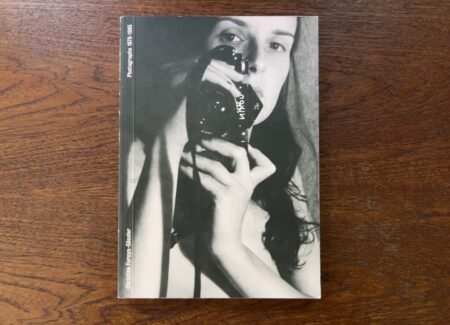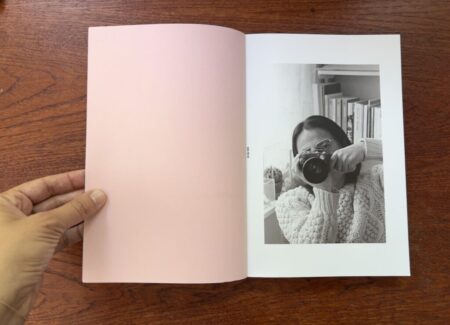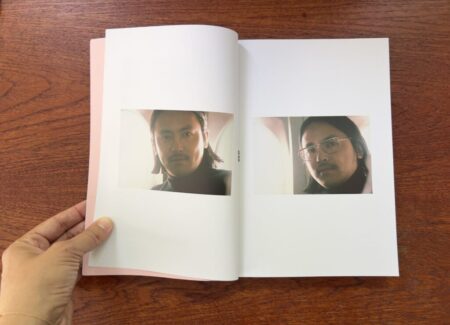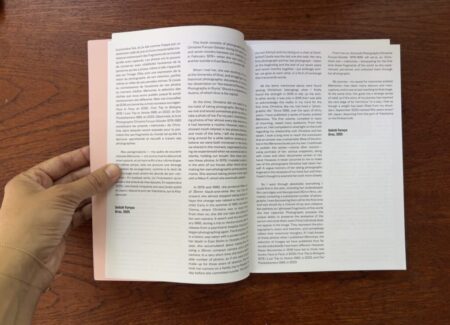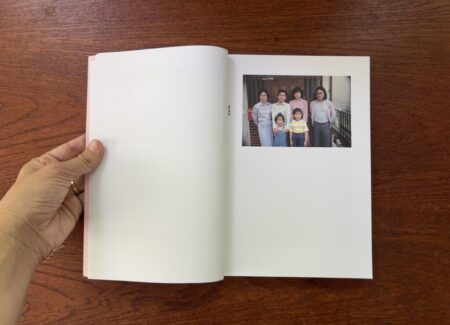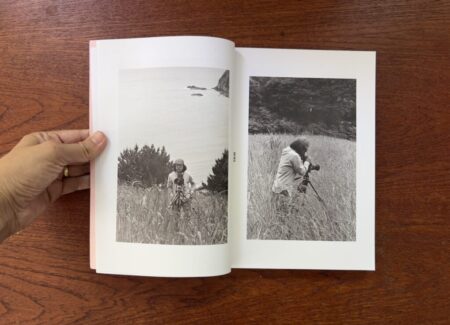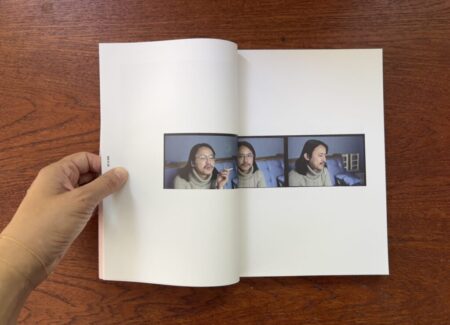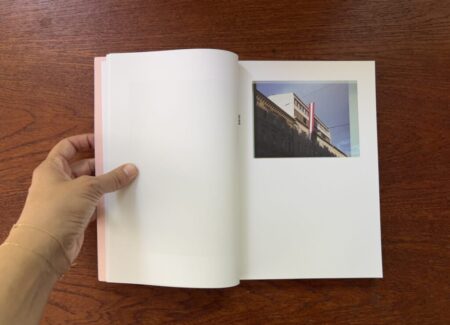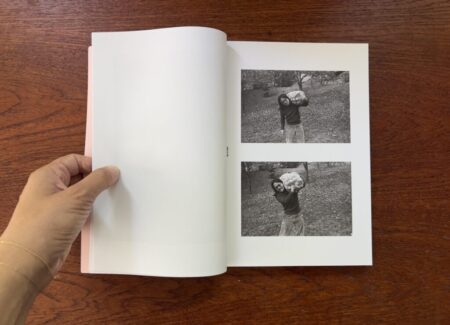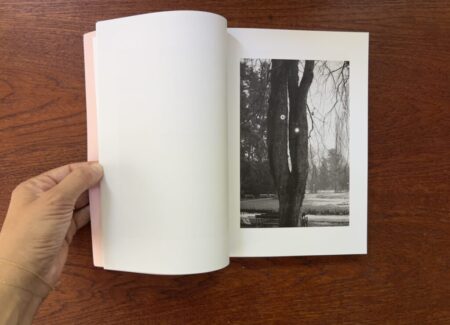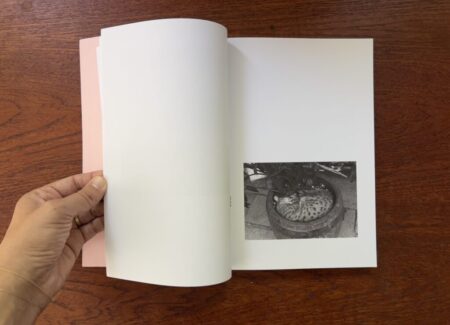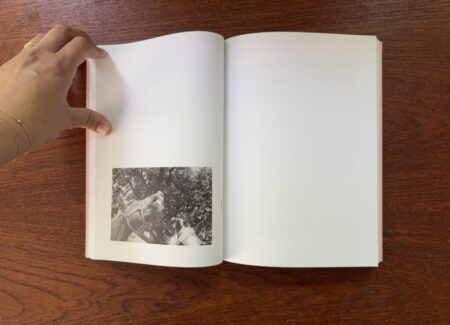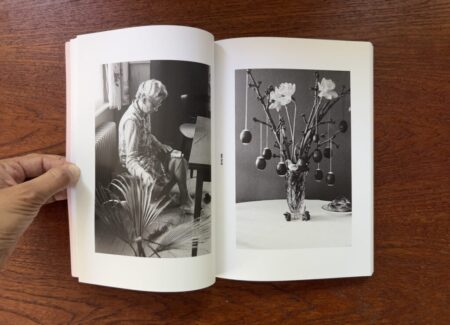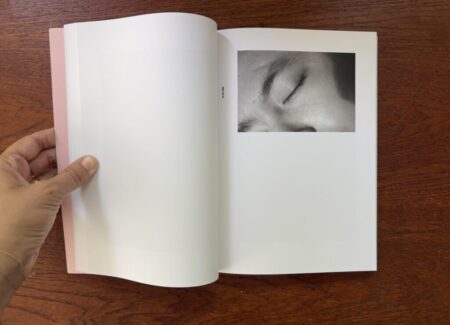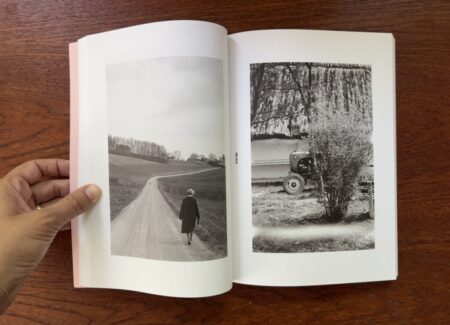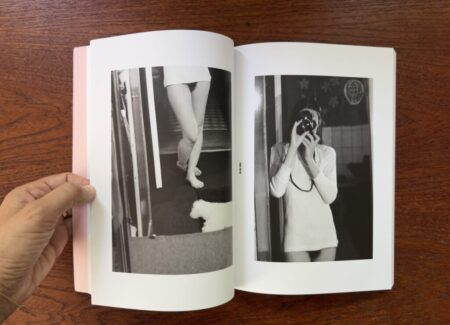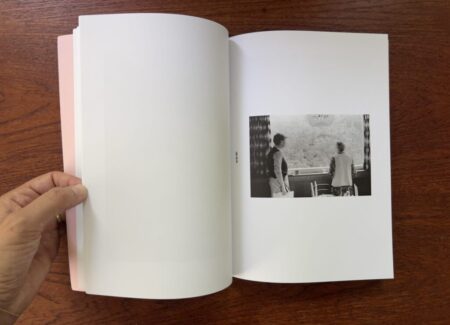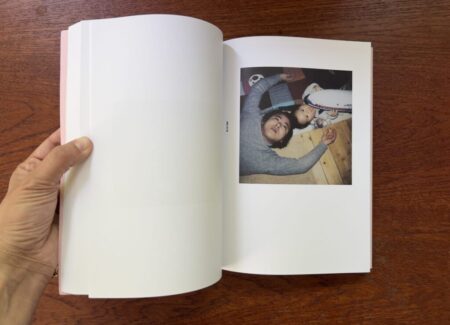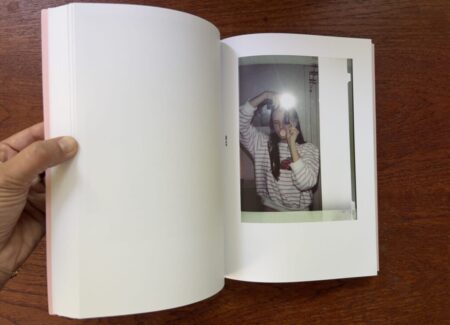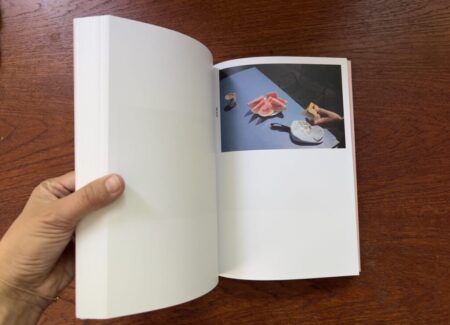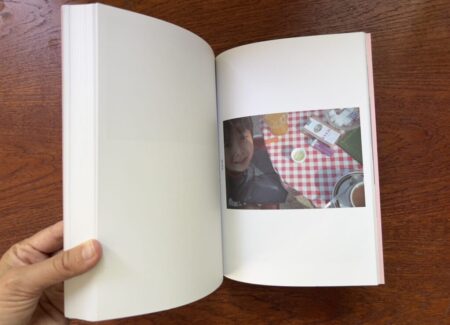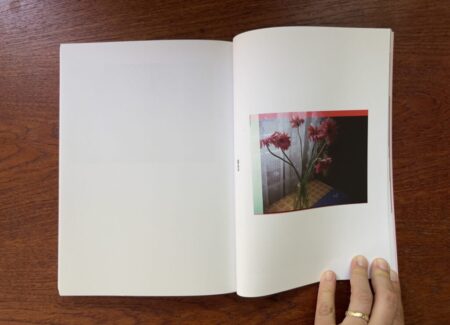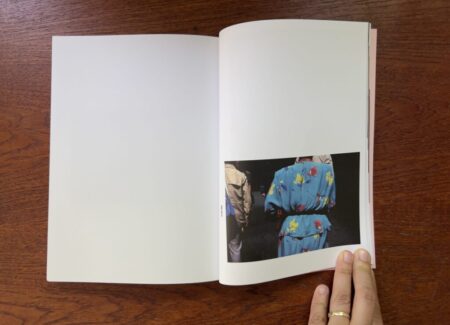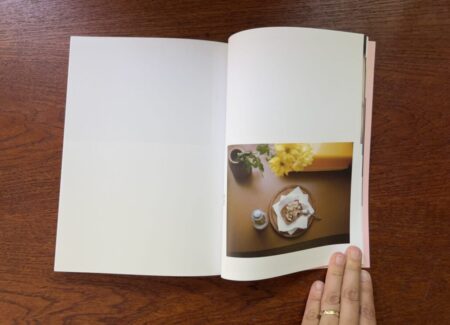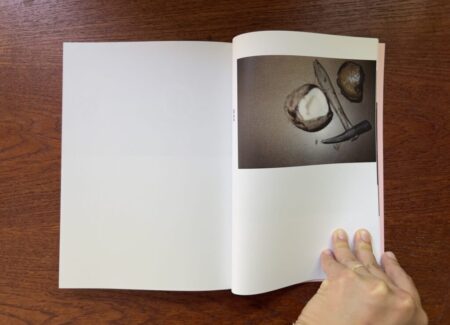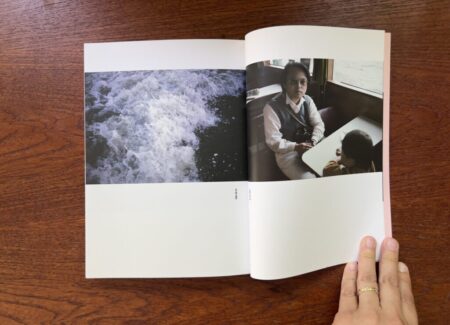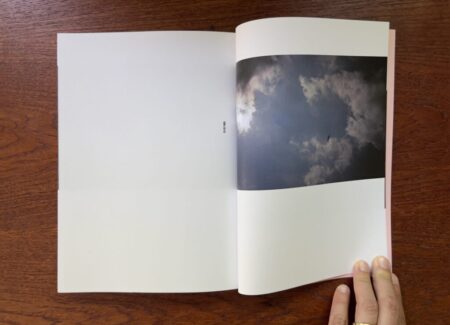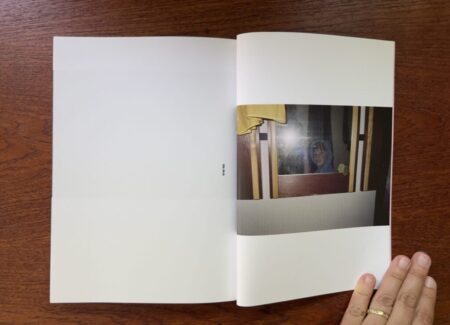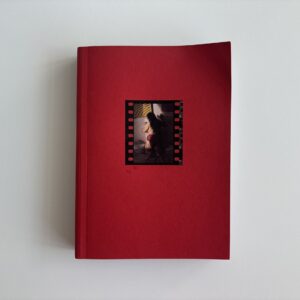JTF (just the facts): Published in 2025 by Chose Commune (here). Section-sewn OTA-bound soft cover (17 x 24 cm), 208 pages, with 129 black-and-white and color plates. Includes an essay by Seiichi Furuya in a folded insert (in French, English, and Japanese). Edit and sequencing by Cécile Poimboeuf-Koizumi, with design by Cécile Poimboeuf-Koizumi in collaboration with Perrine Serre. (Cover and spread shots below.)
Comments/Context: The Japanese photographer Seiichi Furuya has dedicated much of his artistic output to the memory of his wife Christine Furuya-Gössler. Since her suicide in 1985, he has published a series of photobooks titled Mémoires. Each volume, produced with various publishers, consistently features Furuya’s portraits of Christine, alongside personal snapshots, notes, and other documents penned by Christine herself. These Mémoires are profoundly moving and intimate, as Furuya has meticulously arranged the images and text within each to explore themes of loss and grief, and Christine’s struggle with mental illness, all communicated through the visual language of the photobook. Furuya himself explains his motivation, stating, “The first volume [of Mémoires], compiled in tears of mourning, raised many questions. From that point on I felt compelled to shed light on the truth regarding my relationship with Christine and her death. I took a long time to reach the conclusion that an answer was unattainable.”
While cleaning his home in 2018, Furuya rediscovered Christine’s “photographic life” in heaps of negatives stored in his attic. In the text included as an insert in Photographs (1978-1985), Furuya details when and how much film Christine used throughout the seven years and seven months of their life together. This trove of material has resulted in four subsequent books: Face to Face in 2020 by Chose Commune; First Trip to Bologna/Last trip to Venice 1985 in 2022 by Chose Commune; Our Pocketkamera 1985 in 2023 published by Camera Austria; and now Photographs (1978-1985) in 2025 by Chose Commune.
Photographs (1978-1985) is the first book to feature photographs made exclusively by Christine’s hands and from her mind’s eye. The other three books made since the discovery of her archive include various photographs by Seiichi, Christine, and their son Komyo. So it is in this book that those who have followed along with Seiichi on this journey of memory get to see a narrower version of what Christine saw and to imagine what she might have felt.
The photobook’s monochrome soft pink and black cover, intentionally low-fidelity and rough, features a self-portrait of Christine. She holds a Nikon F to her face, the camera’s boxy body obscuring most of her right cheek and lip. Christine gazes directly at the viewer, as if poised to capture an image of the person opening this diaristic photobook.
Measuring 120 photographs, this photobook is slightly larger than an A5 book and maintains a personal notebook’s intimate feel, a fitting choice given its content. The images are arranged in an almost entirely chronological sequence, with only an occasional minor deviation. Each image in the book is dated, and the book’s spine must be fully opened to reveal the date, which is subtly positioned vertically near the gutter.
Christine’s photographs, casual and almost mundane, offer daily glimpses of life spanning seven years and seven months, from when she met Seiichi to the day before she jumped from their apartment window in East Berlin. The first half of the book is predominantly black and white, interspersed with occasional color images. Candid shots of Seiichi with his camera in various settings are frequent, as are more formally posed portraits of him. Christine’s self-portraits appear regularly throughout the book, often taken with a mirror, though sometimes seemingly with a camera self timer. While there are photographs of urban and rural landscapes, the portraits are ultimately what imbue the photobook’s narrative with its significant weight and intensity. This is of course due to the backstory of Christine’s suicide, which occurs the day after the final image in the book.
About halfway through the photobook, after the birth of their son Komyo, the images switch to color. Some of these photographs will be familiar to viewers acquainted with Furuya’s photobooks published after his 2018 discovery of Christine’s archive. Otherwise, the images continue to depict the everyday occurrences of childrearing and early motherhood. Komyo rapidly changes as time passes, outgrowing his stroller and developing his imagination. I appreciate how the editors, collaborating with Christine posthumously, playfully arranged the color images towards the end of the book. The final quarter of the photobook feels more lyrical, particularly the pairing of a bouquet set up on the table photographed on January 7, 1985, followed by a street scene showing a woman in a floral dress photographed on July 21, 1985. Another particularly poignant pairing is Christine’s self-portrait in stage makeup during her drama era, made on June 2, 1985, followed by a still life of a coconut smashed by a pickaxe on June 4, 1985.
Furuya’s photobooks have a dedicated following and are thus hard to come by. When Face to Face was released, it was a stunner, revealing photographs taken by Christine, the muse, looking back at the maestro Furuya, that had never been seen before. It felt like a paradigm shift from all the Mémoires of the past. Photographs (1978-1985), featuring all of Christine’s own photographs—fragments of the world she experienced and collected in her short life—adds an intriguing chapter to the series that Furuya has created, although this time, all credit goes to Christine, and the editor Cécile Poimboeuf-Koizumi who sequenced the images.
For those familiar with the story of Christine Furuya-Gössler and Seiichi Furuya, the photobook Photographs (1978-1985) will likely offer a compelling set of discoveries, and will appeal most to this existing audience, as the book’s bang is dependent somewhat on a prior awareness of the tragic narrative. But even without knowledge of all the details, the book is still a beautiful object – thoughtfully edited, sequenced, and designed, modest in its production, and beautifully printed. Should this prove to be the last photobook in Furuya’s ongoing output from their joint archive, it serves as a tender and thoughtful final published tribute to his wife’s memory.
Collector’s POV: The estate of Christine Furuya-Gössler does not appear to have consistent gallery representation at this time, nor does she have an artist’s website or Instagram presence. As a result, interested collectors should likely follow up directly with with her husband via his website (here).
